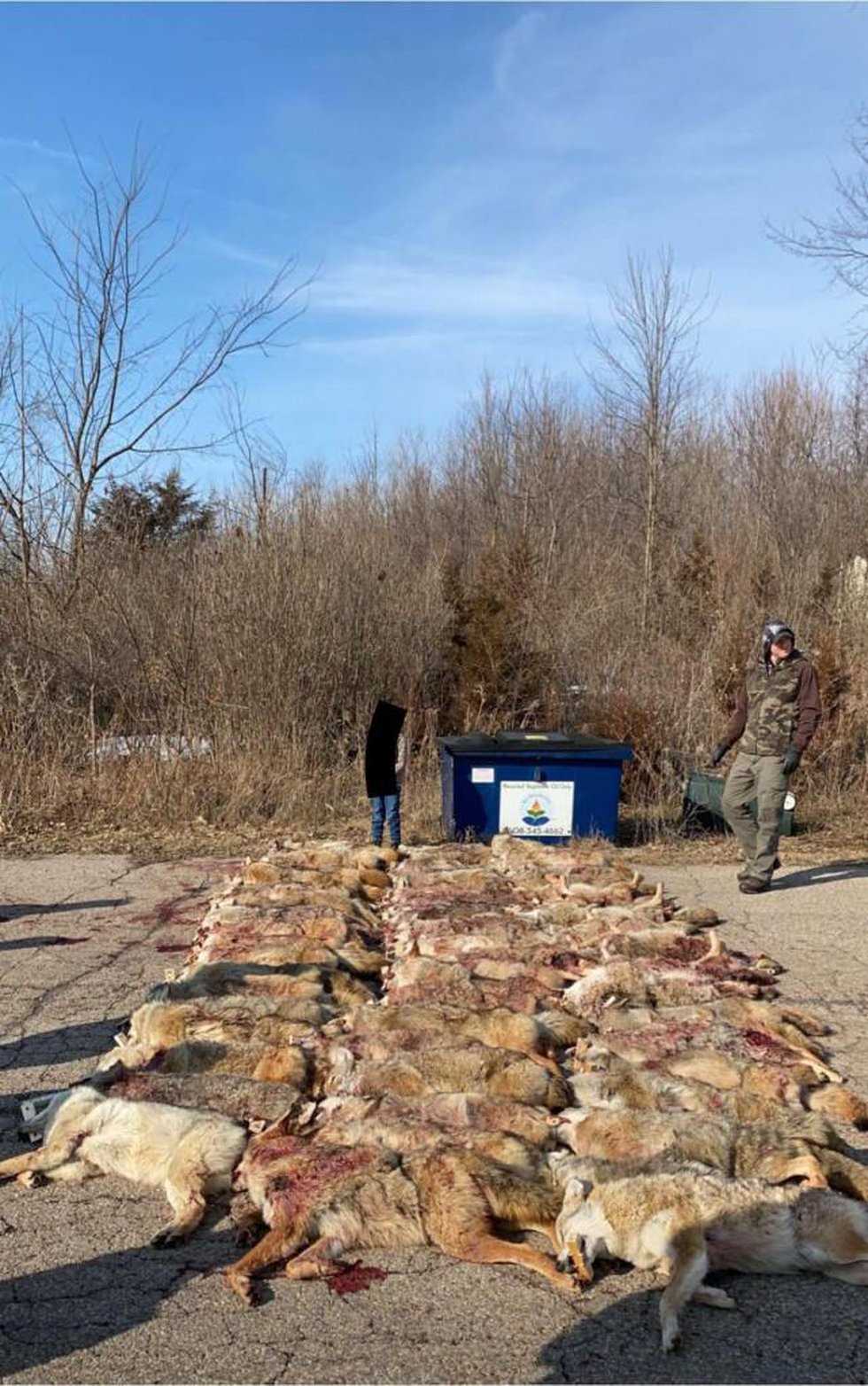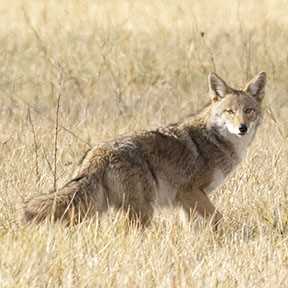Contents
The Ins and Outs of Wisconsin’s Coyote Season: A Comprehensive Guide

If you live in Wisconsin or are planning a hunting trip to this great state, it’s essential to understand the ins and outs of the Wisconsin coyote season. Coyotes, also known as the “song dog” or “brush wolf,” are widespread throughout the state and can be both a fascinating creature to observe and a challenging game for hunters.
Wisconsin’s coyote season is a highly anticipated time for many outdoors enthusiasts. It typically runs from October to March, with different regulations and restrictions applied depending on the hunting method. Whether you’re interested in hunting coyotes for their pelts, to manage their population, or simply for the thrill of the chase, knowing the rules and regulations is crucial.
During the Wisconsin coyote season, hunters can use a variety of methods to pursue these cunning creatures. Common techniques include calling, spot and stalk, using decoys, or hunting with dogs. Each method has its advantages and challenges, and hunters must comply with specific guidelines to ensure the safety of both themselves and the wildlife.
Rules and regulations

Wisconsin has specific rules and regulations in place for the coyote season. Here are some key points to keep in mind:
- Hunting season: Coyote hunting is allowed all year round in Wisconsin, as there are no closed seasons or bag limits. However, it is important to check local ordinances and any specific regulations for the area where you plan to hunt.
- Licenses: To hunt coyotes in Wisconsin, you must have a valid small game or fur harvester license. These can be purchased online or from authorized vendors. It is essential to carry your license with you while hunting and to be familiar with the license requirements.
- Methods of take: Coyotes can be hunted using a variety of methods, including firearms, archery equipment, crossbows, and traps. When hunting with a firearm, you must comply with the specific regulations for the weapon you are using, such as magazine capacity limits and shooting hours.
- Landowner permission: Before hunting coyotes on private land, it is crucial to obtain permission from the landowner or leaseholder. Trespassing without permission is a serious offense and can result in legal consequences.
- Reporting and tagging: Although there is no mandatory reporting or tagging requirement for coyote hunting in Wisconsin, it is encouraged to report your harvest to contribute to wildlife management efforts. You can submit your report online or via phone.
- Respect for wildlife: While hunting coyotes, it is essential to practice ethical hunting practices and exercise respect for wildlife. This includes only taking shots within your effective range, avoiding unnecessary suffering, and properly disposing of harvested animals.
It is crucial to familiarize yourself with the complete set of coyote hunting regulations in Wisconsin before heading out on your hunt. This will ensure that you are in compliance with the law and contribute to the conservation and management of coyote populations.
Hunting license requirements

Before participating in the Wisconsin coyote hunting season, it is important to obtain the necessary hunting license. All individuals who plan to hunt coyotes in Wisconsin must possess a valid hunting license.
To obtain a hunting license, individuals must meet certain requirements. First, they must be at least 12 years old. Minors between the ages of 12 and 17 must also complete a hunter education program. Additionally, hunters must be residents of Wisconsin or possess a non-resident license if they are from out-of-state.
There are different types of hunting licenses available in Wisconsin, including a small game license and a furbearer license. The small game license allows individuals to hunt coyotes, as well as other small game species, while the furbearer license specifically focuses on hunting furbearing animals like coyotes.
When applying for a hunting license, individuals must provide their driver’s license or social security number. They must also pay the required fees, which vary depending on the type of license and the individual’s residency status. It is important to review the current hunting regulations to ensure compliance with all license requirements.
Summary:
Hunting coyotes in Wisconsin requires a valid hunting license. Hunters must be at least 12 years old and may need to complete a hunter education program if they are minors. Different types of licenses are available, including small game licenses and furbearer licenses. Applicants must provide their identification information and pay the appropriate fees. Compliance with all license requirements is essential to participate in the Wisconsin coyote hunting season.
Bag limits

The bag limit refers to the number of coyotes a hunter is permitted to harvest during the season. In Wisconsin, the bag limit for coyotes is currently set at five per person per season.
Bag limits are important because they help ensure the conservation and sustainable management of coyote populations. By setting a limit on the number of coyotes that can be harvested, wildlife management authorities can prevent overharvesting and preserve the overall health and stability of the coyote population.
It is important for hunters to be aware of and abide by bag limits to ensure the long-term viability of coyote populations in Wisconsin. Violating bag limits can result in penalties and fines, as well as damage to the local ecosystem.
Hunting hours

In Wisconsin, the hunting hours for coyotes are regulated by the Department of Natural Resources (DNR). These regulations are in place to ensure the safety of both hunters and the public. Hunting hours for coyotes in Wisconsin vary depending on the time of year and the type of weapon being used.
During the statewide open season for coyotes, hunting hours are typically from one half-hour before sunrise to half-hour after sunset. This provides hunters with ample daylight to safely and effectively hunt coyotes.
It’s important to note that the specific hunting hours may vary in certain areas or during specific seasons. Additionally, hunters must be aware of any local ordinances or restrictions that may further regulate hunting hours.
Hunters should always consult the Wisconsin DNR’s hunting regulations and check for any updates or changes to the hunting hours for coyotes. It’s also important to stay informed about any temporary restrictions that may be in place due to weather conditions or other factors.
By adhering to the hunting hours set by the Wisconsin DNR, hunters can enjoy a safe and successful coyote hunting season while also respecting the regulations in place to protect the wildlife population and ensure a sustainable future for hunting in Wisconsin.
Strategies for a Successful Hunt

When it comes to hunting coyotes in Wisconsin, having a well-thought-out strategy can greatly increase your chances of a successful hunt. Here are some key strategies to keep in mind:
1. Scout the Area: Before heading out on your hunt, take the time to scout the area where you will be hunting. Look for signs of coyote activity, such as tracks, scat, or territorial markings. Knowing where the coyotes frequent will help you set up in the best location.
2. Use Decoys and Calls: Coyotes are often lured in by decoys and calls. Using a realistic decoy can attract curious coyotes, while using various calls, such as distress calls or howls, can mimic natural coyote vocalizations and increase your chances of drawing them in.
3. Set Up Downwind: Coyotes have a keen sense of smell, so it’s essential to set up your hunting location downwind from where you expect the coyotes to approach. This will help minimize the chance of being detected by their sensitive noses.
4. Employ Camouflage and Concealment: Coyotes have excellent eyesight, so using camouflage clothing and concealing yourself well within the surroundings is crucial. Make sure to blend in with your surroundings and minimize movement to avoid being spotted.
5. Use Stealth and Patience: When hunting coyotes, it’s important to be patient and move quietly. Coyotes have excellent hearing, so any excessive noise can alert them to your presence. Move slowly and silently to avoid spooking them.
6. Aim for Vital Areas: When you finally have a clear shot at a coyote, it’s important to aim for vital areas. The ideal shot placement is in the chest or neck area, where vital organs are located. This will ensure a quick and ethical kill.
7. Practice Shooting Skills: To increase your chances of a successful hunt, it is crucial to practice your shooting skills regularly. Being accurate and confident with your shot will greatly improve your chances of hitting your target.
Remember, hunting coyotes in Wisconsin requires a valid hunting license, so make sure to comply with all the state regulations and have the necessary permits. Following these strategies and techniques will give you a better chance of a successful coyote hunt in Wisconsin.

A skilled hunter, dedicated conservationist, and advocate for ethical practices. Respected in the hunting community, he balances human activity with environmental preservation.
